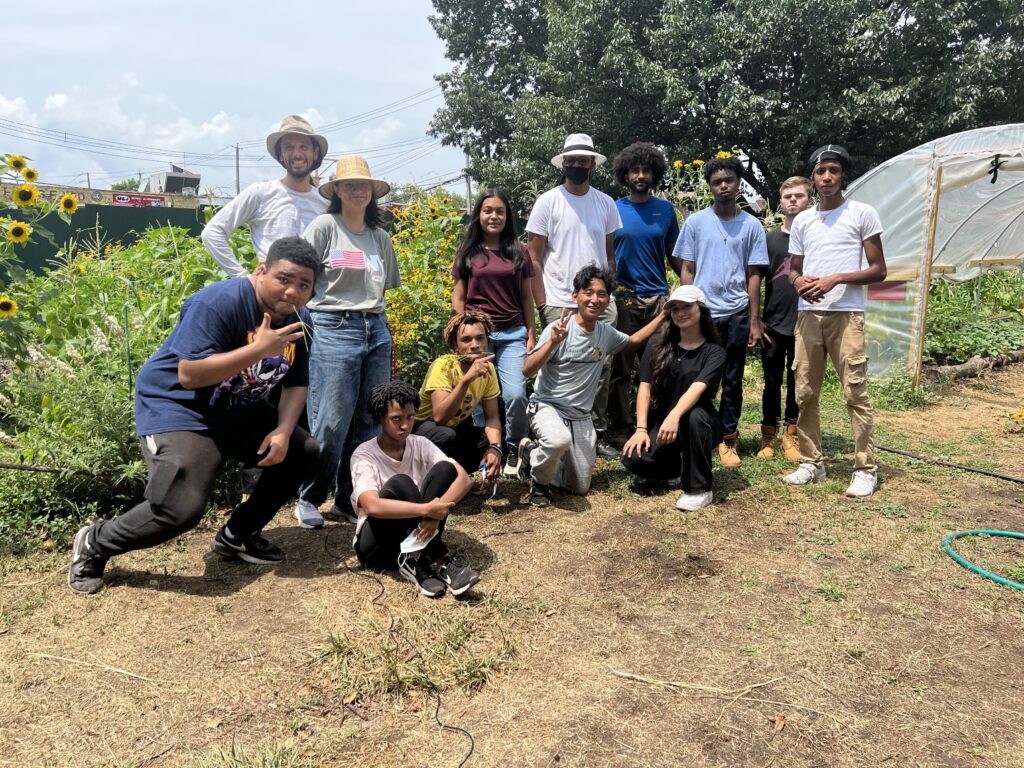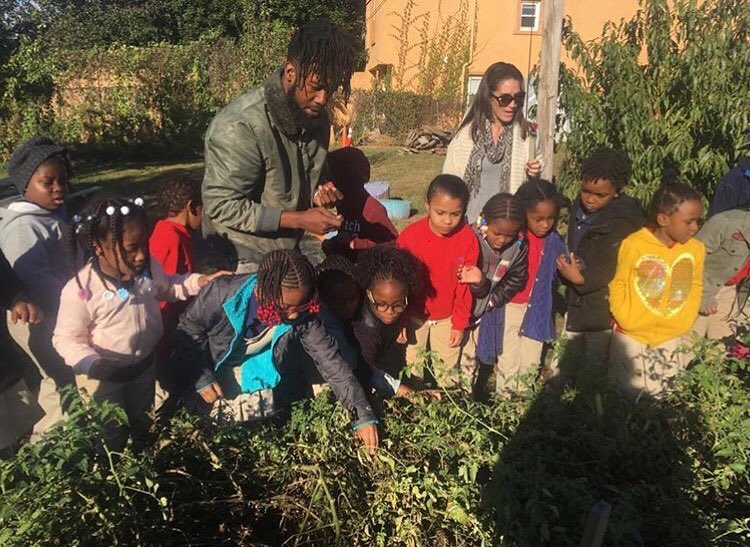Whether you’re a seasoned gardener or just starting out, creating an urban farm isn’t as challenging as you might think! Bring fresh produce and fun activities into your neighborhood with our step-by-step guide.
Spring is in the air! Small buds are emerging from trees and clusters of yellow flowers are peeking through the concrete. Soon, farmers market stands will evolve from winter produce (potatoes, anyone?) to brightly-colored cucumbers and cherries. Witnessing all of this abundance can spark the desire to create an urban farm of your own, which is simpler than you might imagine! Here, we’ve mapped out everything you need to transform a patch of land into a bustling, productive urban farm.
What is an Urban Farm?
According to the New York City Food Policy Center, urban farms utilize hydroponics, aquaponics, green houses, rooftop farming, and regenerative agricultural practices to bring fresh produce to cities. Unlike community gardens, urban farms can often cover several acres of an urban area.
Urban farms also provide nutrient-rich foods in areas that experience food apartheid, or “the system of segregation that divides those with access to an abundance of nutritious food and those who have been denied that access due to systemic injustice.” They can also serve as essential vehicles for community building as they become sites of neighborhood celebration, gathering, and growth!
- Know your history + do your research.
In the past twenty years, urban farms have become popular in cities across the United States. In Flatbush, Brooklyn, the Wyckoff Farm has a weekly stand operating from June to October that is completely run by local teens. In North Philadelphia, resident leaders have created a park and pavilion rooted in Afro-futurism, which provides fresh food and events to local community members. And these are just two examples! Learning about other projects can help inspire your own.
It’s especially helpful to research urban farms in your particular city. Learning about their successes and challenges can inform what you grow, how you access a plot, and how to plug into a larger community of urban farmers. For example, there might be a crop that should grow perfectly in your city’s climate, but struggles to take root in practice. Or maybe your city has a free compost program for urban farms and community gardens that you wouldn’t know otherwise! Connecting with people from your city can help you avoid pitfalls and make your farm as prosperous as possible.

- Get to know your plot.
As any longtime city resident knows, land use and zoning policies can vary from block to block, and even within a single building! Before you dig in (both literally and figuratively), it’s important to figure out if the plot of land you’re eyeing is available for agricultural use. You can do this through your city’s resources, by asking neighbors who live in the area, and even leaving a sign on the plot that you’re eyeing.
If you already have access to a plot of land, this is a good moment to check its suitability for a farm. First, make sure that your land has access to water. Many cities have special programs that provide discounted water to community gardens and urban farms — but that requires you’re near a water source. It’s also important to understand the irrigation system, or where the water will go.
- Decide what to plant!
Now that you’ve researched other local efforts, discovered the details of your plot, and partnered with community members, it’s time to figure out what to plant! This might sound obvious to someone who’s creating an urban farm, but it’s important to identify what grows well in your city. For a quick win, it can be nice to start by growing plants that require a little less TLC. Popular options include cherry tomatoes, snap peas, cucumbers, and a variety of lettuce. If you’ve developed partnerships with organizations from step one, this can be a great time to reach out and learn what’s worked for them.
It’s also important to research different weather patterns. Even if you’re excited to get started on that first warm day in March, it’s important to make sure a cold snap isn’t coming later in the month, which can freeze your hard work in a night. As climate change challenges our ability to do things within the status quo, it’s also important to consider ways you might need to protect your plants during the growing season. This can include making sure your taller plants have wooden or metal supports during a rainstorm, covering your plants during an unforeseen frost and making sure they have plenty of water during heat-waves. Preparing ahead of time can mitigate long-term damage.

- Prepare the space.
Once you’ve identified what you want to plant and when, you can begin to clear the space and get it ready for the growing season. This means clearing out any trash or large objects that have accumulated, and starting to identify how you’ll grow your plants.
Drafting a map or written plan (and even collaborating with a local architectural firm who may provide low or no-cost rates to community-led organizations) can help keep you on track to make the most of the space and maximize community needs. Will you have multiple garden beds? One large farm? A stage for community events? All of these questions should go into your preparation.
If you already have soil, now is the time to make sure it’s rich with nutrients. If you’ve decided to build garden beds, start checking out neighborhood resources like thrift stores and farmers markets to find free objects to plant with. Wooden planks, cinder blocks, and bricks all make excellent materials. Finally, make sure the surrounding community knows that your farm will be planting soon! You’ll need all-hands-on-deck to clear off any debris, create garden beds, and make sure everything is planted.
- Plant!
Now’s the fun part: it’s time to plant! If you have the capacity, it can be fun to transform your first planting day into a community festival day full of music, building, and food. (You can use ioby’s crowd-funding platform to fundraise!) To include folks, you can separate the farm into separate areas for fruits, vegetables, and herbs, and one “team leader” can lead the planting for that section. This can create a sense of investment as people witness their seeds emerge and know what they’ve planted.
- Maintain + Celebrate!
Assigning different groups to different plots of land can also help in the maintenance phase. Get clear on who will water the plants, till the soil, and cut away weeds each week. If people have their own plots, try implementing “community farm days” so that everyone can still plant and gather.
Once your crops start to sprout, it’s time to celebrate. Celebration may take many different forms depending on your community. Some ideas include: hosting a farm stand for local community members, selling your produce at a nearby farmers market, or inviting neighbors to come in and harvest their own.
As the season comes to a close, make sure to take time to reflect on what worked, what didn’t, and your dreams for next year: Do you want to expand? Have more community participation? Use the winter months to get set up for the next growing season — and enjoy the fruits of your labor!
Additional Resources:
- The American Community Garden Association has a comprehensive list of urban farms and community gardens, which can help connect you with other urban farmers in your city.
- Urban Farmer has a helpful guide to what you should plant based on the season, location, and goals of your specific farm.
- The American Horticultural Association can help you find a master gardener in your area, most ofen through a local university. They can support all aspects of your farms development, from soil health to harvest.
ioby is a national crowdfunding nonprofit, but we’re much more than that. We help connect leaders (like you!) with one-on-one coaching and support to raise the money they need from their communities to make our neighborhoods safer, greener, more livable, and more fun.
Have a great idea to get good done in your neighborhood? We want to help! Share your idea with us and we can help get you started.